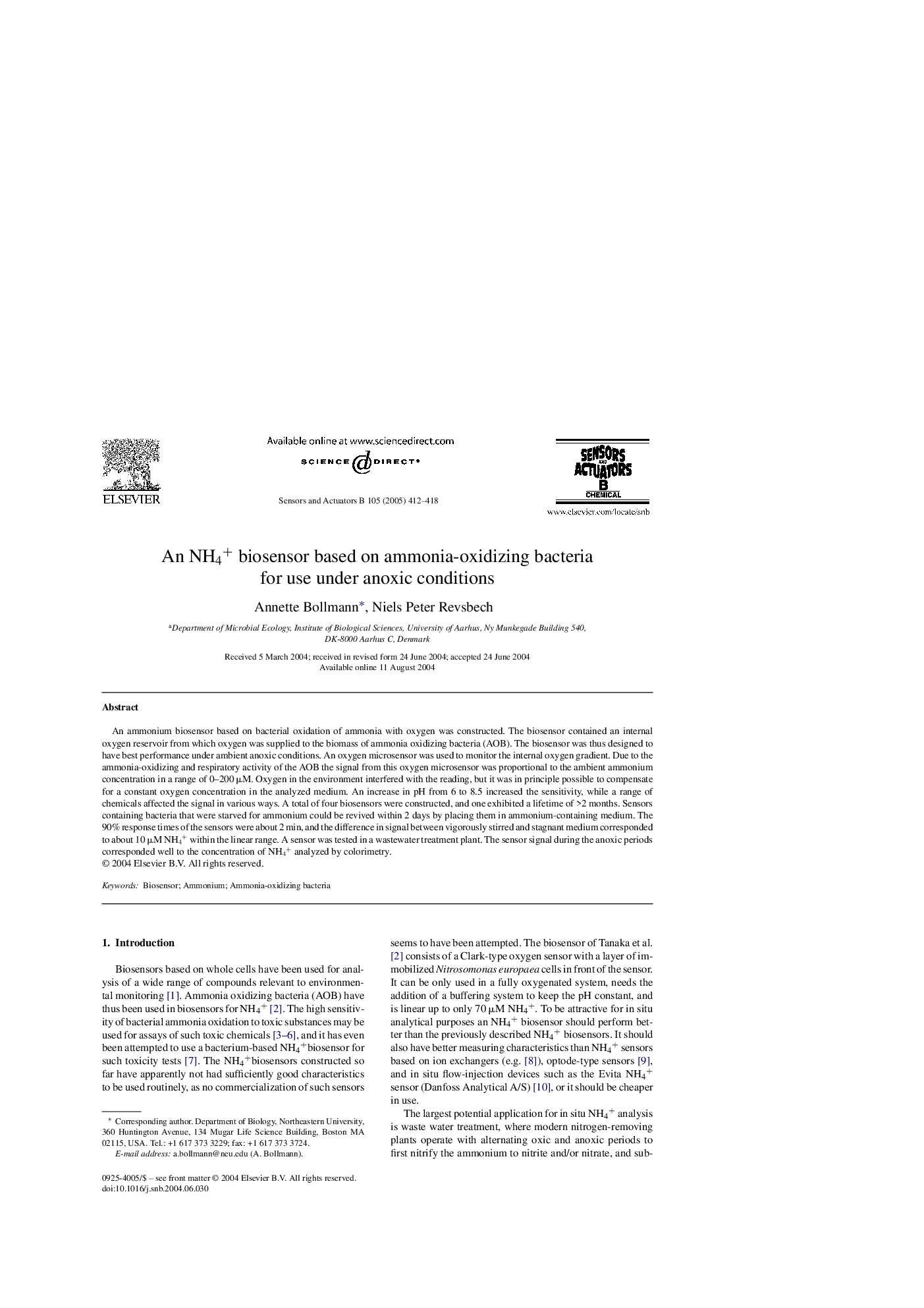| Article ID | Journal | Published Year | Pages | File Type |
|---|---|---|---|---|
| 10411064 | Sensors and Actuators B: Chemical | 2005 | 7 Pages |
Abstract
An ammonium biosensor based on bacterial oxidation of ammonia with oxygen was constructed. The biosensor contained an internal oxygen reservoir from which oxygen was supplied to the biomass of ammonia oxidizing bacteria (AOB). The biosensor was thus designed to have best performance under ambient anoxic conditions. An oxygen microsensor was used to monitor the internal oxygen gradient. Due to the ammonia-oxidizing and respiratory activity of the AOB the signal from this oxygen microsensor was proportional to the ambient ammonium concentration in a range of 0-200 μM. Oxygen in the environment interfered with the reading, but it was in principle possible to compensate for a constant oxygen concentration in the analyzed medium. An increase in pH from 6 to 8.5 increased the sensitivity, while a range of chemicals affected the signal in various ways. A total of four biosensors were constructed, and one exhibited a lifetime of >2 months. Sensors containing bacteria that were starved for ammonium could be revived within 2 days by placing them in ammonium-containing medium. The 90% response times of the sensors were about 2 min, and the difference in signal between vigorously stirred and stagnant medium corresponded to about 10 μM NH4+ within the linear range. A sensor was tested in a wastewater treatment plant. The sensor signal during the anoxic periods corresponded well to the concentration of NH4+ analyzed by colorimetry.
Related Topics
Physical Sciences and Engineering
Chemistry
Analytical Chemistry
Authors
Annette Bollmann, Niels Peter Revsbech,
